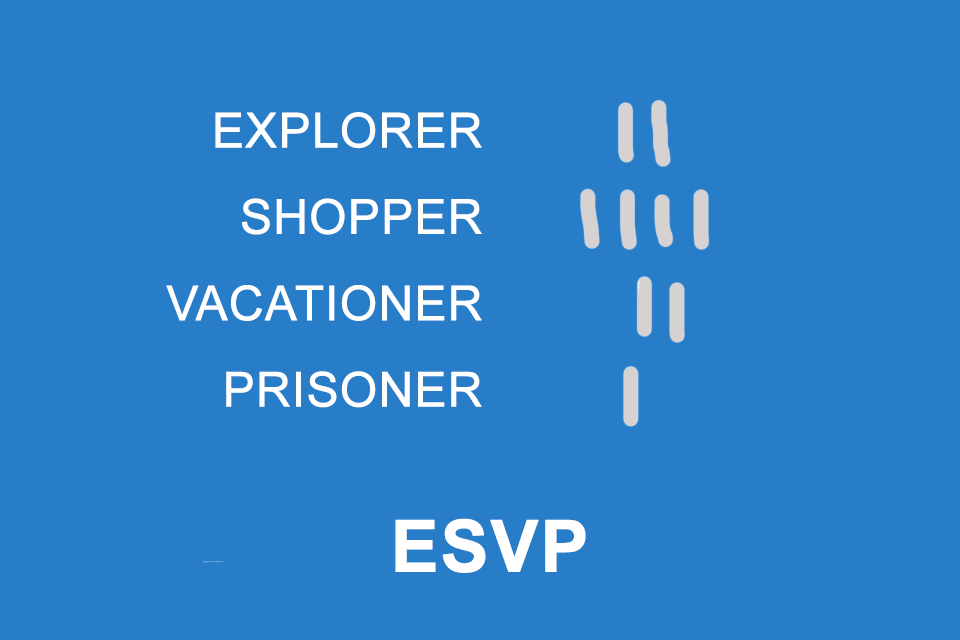What is ESVP
Smartpedia: ESVP is a method for querying the motivation of meeting participants. It has four categories (Explorer, Shopper, Vacationer, Prisoner).
ESVP – a method for determining motivation in meetings
Many organisations hold regular meetings. The quality of these meetings also depends on the motivation of the participants. ESVP is a method to find out about this motivation. It goes back to Esther Derby and Diana Larsen who described it in their book “Agile Retrospectives” in 2006. The moderator of the meeting, at a retrospective e.g. the Scrum Master, asks the participants to document their motivation anonymously, e.g. on post-it, in relation to the upcoming meeting.
ESVP Categories
In principle, four categories are available in ESVP:
- E stands for Explorer: The explorer among the participants would like to gain new ideas and insights and to learn as much meaningful information as possible about the upcoming iteration, the next release or the project.
- S stands for Shopper: The shopper is interested in all available information in order to use those which are useful for him.
- V stands for Vacationer: The vacationer is not interested in the results of the meeting, but is happy not to have to go about his actual work.
- P stands for Prisoner: The prisoner feels that he is forced to attend or at least not voluntarily attends the meeting. He would like to do something else, and he doesn’t care about the results of the meeting.
Benefits for participants of the ESVP method
The ESVP method is interesting not only for the organiser of a meeting, but also for the participants. Classification can also help the participant being interviewed: Why am I here only as a vacationer? Why am I happy to be able to escape from my normal job? Why am I sent to meetings I don’t want to attend? Why don’t I want to attend the meetings? Answers to such questions can help participants to understand
- their role,
- position in the organisation or
- personal expectations.
The publication of the results
It is the moderator’s responsibility to publish or even visualise the participants’ ratings. Some explanations of ESVP also state that the participants should “out” themselves publicly, but especially in a tense environment this could
- be counterproductive if individual participants do not want to reveal their actual motivation, e.g. in front of a present product owner, project manager or stakeholder.
- lead directly to a falsified result.
Alternatively, the query can also be made anonymously using a ballot paper with subsequent publication. Irrespective of this, the moderator can repeat the question at the end of the meeting or also at the beginning of a next meeting in order to determine possible developments over a (longer) period of time. If several participants see themselves as vacationers or prisoners over a longer period of time, the moderator should look for the conversation under 4 eyes and get to the bottom of the causes for these classifications.
Opinions vary on the question of whether it makes sense to release “prisoners” directly from participation in the meeting.
Impulse to discuss
ESVP also stands for European Security and Defence Policy (Europäische Sicherheits- und Verteidigungspolitik). It is based on the European Security Strategy adopted in 2003, which identifies terrorism, the proliferation of weapons of mass destruction, regional conflicts, collapse of states and organised crime as major threats and defines corresponding tasks in the form of a common foreign and security policy. Whether an ESVP has ever been used at an ESVP meeting is not known, but it tends to be rather unlikely.
If you like the article or would like to discuss it, please feel free to share it in your network. And if you have any comments, please do not hesitate to send us a message.
Here you can find additional information from our t2informatik Blog:



